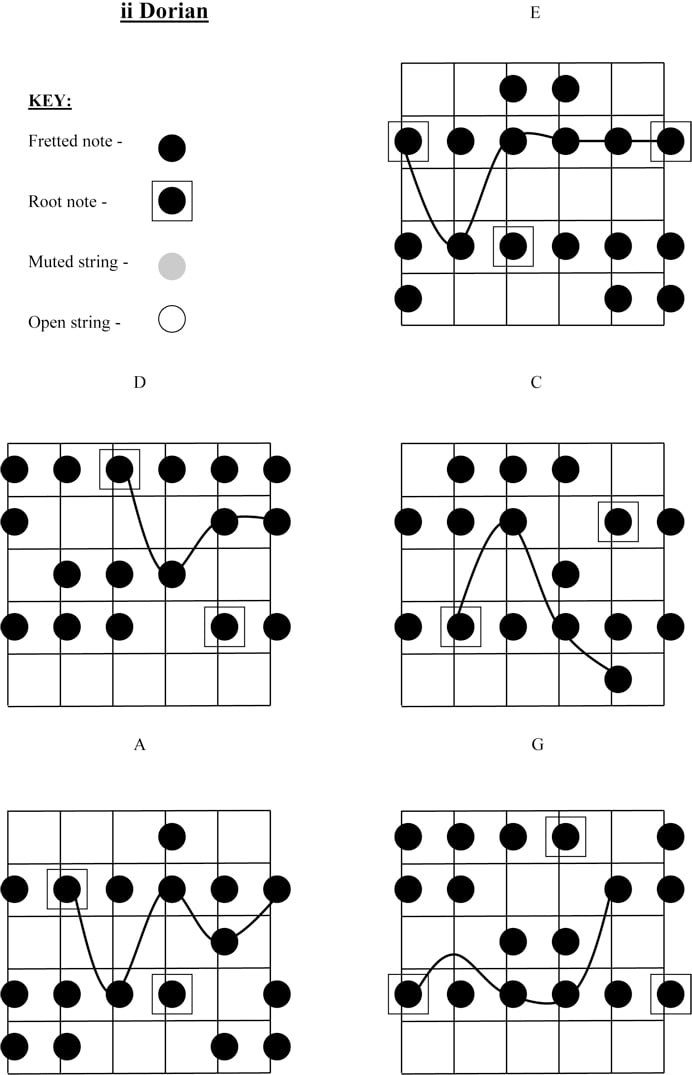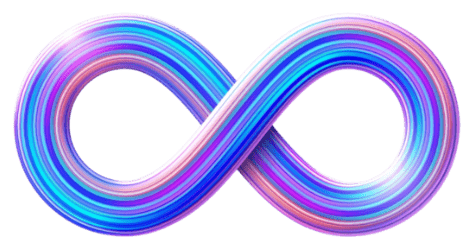More
- Bouncy FunLEVEL 8Explore the realms of bounce guitar with me!
- Fun With DelayLEVEL 4Delay using mostly add9 chords.
- Modes WorkoutLEVEL 2Learn to play and recognize by ear the modes from the Major scale.
- Modes Workshop 4 - Modes Over ChordsLEVEL 2Simple but effective etude for practicing different modal voicings over corresponding chords.
- Dorian PhrasesLEVEL 5This scale sounds funky and bluesy. Many guitarists use the Dorian mode in their solos, such as Vaughan, Santana, Eric Johnson, among others.
- Dorian FunkLEVEL 5Analyzing the fusion of the Dorian scale with the Blues scale.
- Vibing DorianLEVEL 8Learn a solo over a modal progression where all chords are on the dorian mode.
- Bass Modes WorkoutLEVEL 4Learn 7 modes of the major scale and how to match them with chords for successful improvising!
- Melodic Minor ModesLEVEL 10Lesson teaching tricks and tips of the modes of the melodic minor scale. Nowadays, this scale is primarily used in jazz/fusion, but some excerpts of it can be found in other styles as well, such as prog rock, country, funk, samba and others.
Feedback
 Nick Kellie11th September 2008
Nick Kellie11th September 2008ItsMe - yeap thats the exact picking pattern.
Jose - yeah thats right, its an AES-FG with "Fret Wave"
Nick Jose Mena10th September 2008
Jose Mena10th September 2008Oh Man I hadn't noticed, you even Have Frank Gambale's Signature model, I wouldn't have noticed if it wasn't because you responded to sigma 7 about the frets.
 ItsMe10th September 2008
ItsMe10th September 2008BTW do you economy pick in video 2 (something like d u u d u u d) or is this alternate picking ?
 ItsMe10th September 2008
ItsMe10th September 2008That was super great. I'm still working on your older stuff. More work now !!
Alex879th September 2008
Very nice lesson Nick

 Nick Kellie8th September 2008
Nick Kellie8th September 2008thanks everyone - Jose - yeap thats right, I am a fan.
Sigma 7 - well yes, only 2 frets are corrected and they are the 2 worst offenders on the guitar in general.... OrganisedConfusion8th September 2008
OrganisedConfusion8th September 2008This is insanity. I don't know how you play like that. The sweeping later on is godlike lol.
 And a great sense of humour. I love the outro and the 5 days later
And a great sense of humour. I love the outro and the 5 days later 
 Marcus Siepen8th September 2008
Marcus Siepen8th September 2008Awesome Nick, I love the ending

 Alejandro Pinero8th September 2008
Alejandro Pinero8th September 2008great lesson !!
very good improvisation! Bedlam7th September 2008
Bedlam7th September 2008Great series, can't wait for more. You're lessons are so useful!
 Jose Mena7th September 2008
Jose Mena7th September 2008I really like your phrasing, Is Frank Gambale one of your guitar heroes?. You use economy picking the same way he does,great stuff
 Jerry Arcidiacono7th September 2008
Jerry Arcidiacono7th September 2008Great lesson and great playing Nick!
 Hisham Al-Sanea7th September 2008
Hisham Al-Sanea7th September 2008great one Nick.
 Siggum7th September 2008
Siggum7th September 2008Awsome Nick, and i dig your humor, spot on

 Gerardo Siere7th September 2008
Gerardo Siere7th September 2008Great series, keep them comming.
 David Wallimann7th September 2008
David Wallimann7th September 2008Nick, you are hilarious! That first vid was so funny! :-)
This lesson is brilliant man, I love your phrasing! :-) Marcus Lavendell7th September 2008
Marcus Lavendell7th September 2008Nick, you make it look so easy!!
 Great lesson as always!
Great lesson as always! sigma77th September 2008
sigma77th September 2008i like ur guitar...did u put the frets so each note is exact? because i see they are not an exact line
 Danilo Capezzuto7th September 2008
Danilo Capezzuto7th September 2008Great lesson Nick! It's raining notes!
 Eat-Sleep-andJam7th September 2008
Eat-Sleep-andJam7th September 2008Loved it.
 Nazgul7th September 2008
Nazgul7th September 2008Lol, 5 days later.
 Great lesson!
Great lesson! Kuba Szafran7th September 2008
Kuba Szafran7th September 2008Awesome improvisations!
 Harris Sopovic7th September 2008
Harris Sopovic7th September 2008Wow, killer licks. Need to learn some of these. Great lesson Nick !
 Bogdan Radovic7th September 2008
Bogdan Radovic7th September 2008Great Dorian workout Nick !

 kaznie_NL7th September 2008
kaznie_NL7th September 2008Thnx Nick! I think a lot of people can realy use your lessons!Haha, cool end

 Ivan Milenkovic7th September 2008
Ivan Milenkovic7th September 2008Great stuff man, lots of interesting stuff here! And great "5 days later" part as well

 Juan M. Valero7th September 2008
Juan M. Valero7th September 2008useful lesson !! and great playing

 Chokehold7th September 2008
Chokehold7th September 2008"5 Days Later"

 Toni Suominen7th September 2008
Toni Suominen7th September 2008Very nice Nick!

 Pablo Vazquez7th September 2008
Pablo Vazquez7th September 2008Cool lesson Nick!! Great one!!
 Ian Bushell7th September 2008
Ian Bushell7th September 2008Great playing Nic:D
The economy/sweep gambale stuff was crazy!
What was that at the end? haha MickeM7th September 2008
MickeM7th September 2008Great playing, will dive into this soon, love how the family got they saying too
 haha
haha Nick Kellie7th September 2008
Nick Kellie7th September 2008thanks guys

 Emir Hot7th September 2008
Emir Hot7th September 2008great playing
 Muris Varajic7th September 2008
Muris Varajic7th September 2008Tons of Gambalish licks Nick,just great!

 Chrisshred7th September 2008
Chrisshred7th September 2008Very good sound, Nice technique!!! I love it!
Practicing Peers
- Total views: 0
- Member views: 0
- Guest views: 0
- Lesson
- My notes
Welcome to a series designed to outline the usage of each mode in a given context. Learning theory can, to say the least, be a little boring - but it is essential if you want to deepen your knowledge and connection with music and improvisation.
Granted, there are great players who claimed not to know any theory, but they had their own unique methods of figuring things out so they used their own kind of intuitive theory system if you will. Regardless of this, it's far easier to communicate with other musicians using common terminology - you wouldn't learn Lithuanian in order to move to China for example.
Anyway - I have supplied 5 shapes for the dorian mode - these are not in a key, and rely upon you placing their root notes on the correct fret in order to make them in the right key. For example, shape one or E shape has its root on the 6th string and its the 1st note. So for this shape to be C dorian, that root note must be a C, therefore starting on fret 8 on the 6th string.
The D shape (shape 2) has its root as the lowest note on the 4th string. Therefore, in order for that root note to be a C, we must start that shape on the 10th fret!
Good luck and I hope some of these licks act as a catalyst for creativity and inspiration in the realm of modes!
Nick
Jump to start: Home or `s` , you can also click/tap the lesson part again (the numbers above player)
Go to next part: PageUP or End.
Volume: ArrowUp / ArrowDown keys
Go to any part: Number keys (combinations also possible)
Pause or play: `k` or space key
Fullscreen: `f`, esc to close
Increase / decrease speed : `+` or `-`







